In case you’re in search of ways to inject some personality into your kitchen, it’s easy is plants. Plants can bring life to the space (quite literally) by bringing the flavor of nature inside. They help keep the air that you breathe clean and fresh while bringing an atmosphere of peace that can be a perfect fit for any space, regardless of the kind of style. The plants are the main focus of a design concept known as biophilic design. This is a style that focuses on the design of a space by using natural materials and also incorporates elements of design that are in the style of nature.
The kitchen is an ideal place to begin playing around with natural-inspired design. Instead of paying to buy new furniture and expensive décor, all you need to do is add several plants that will give the space an eco-friendly treatment. The addition of a few plants to your home can give the kitchen an airy, fresh feel that is very beneficial in a space that is always at risk of becoming chaotic.
However, before you start buying a variety of kitchen plants, be aware that not all house plants can thrive in a setting that is constantly changing temperature and isn’t always flooded with sunlight. We’ve listed some of the best plants that are able to flourish in every kitchen, regardless of whether they’re fuelled by the humid climate and require minimal light or are used for culinary purposes. These plants will allow you to relax and enjoy the natural vibes as you’re cooking and will provide a relaxing and calming experience.
Table of Contents
Snake plant
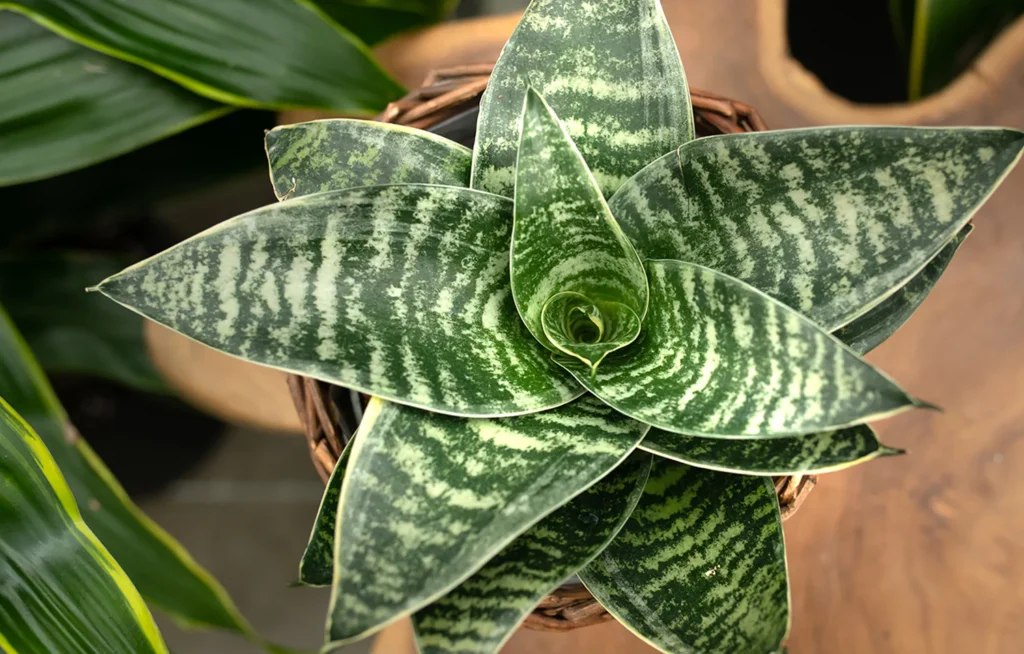
The popularity of the snake plant has been increasing recently, and it’s easy to see the reason. This house plant exudes “elegance” with its sharp and vertical leaves, but it’s also almost impossible to eradicate. It doesn’t require much light — only direct, bright lightand can withstand the smallest amount of water. It’s also not likely to be affected by insects. It’s easy to see the reason this plant gets its name from serpents, but it’s also a cat plant. It does not like being the center of attention, and doesn’t look flash;y however, it has a certain sophistication regarding it.
Snake plants can make a huge impact in a modern kitchen with their sharp leaves that penetrate a peaceful, serene space, and give the room a splash of vibrant green. You can try a huge snake plant that is in a pot placed in the ground, or set some smaller plants on shelves that are floating shelves. Snake plants are among those rare succulents that do not require much light; however, they do thrive in bright and sunny areas. Get wild and place small snake plants on your windowsills to bring a sophisticated addition and greenery to your home.
Aloe vera
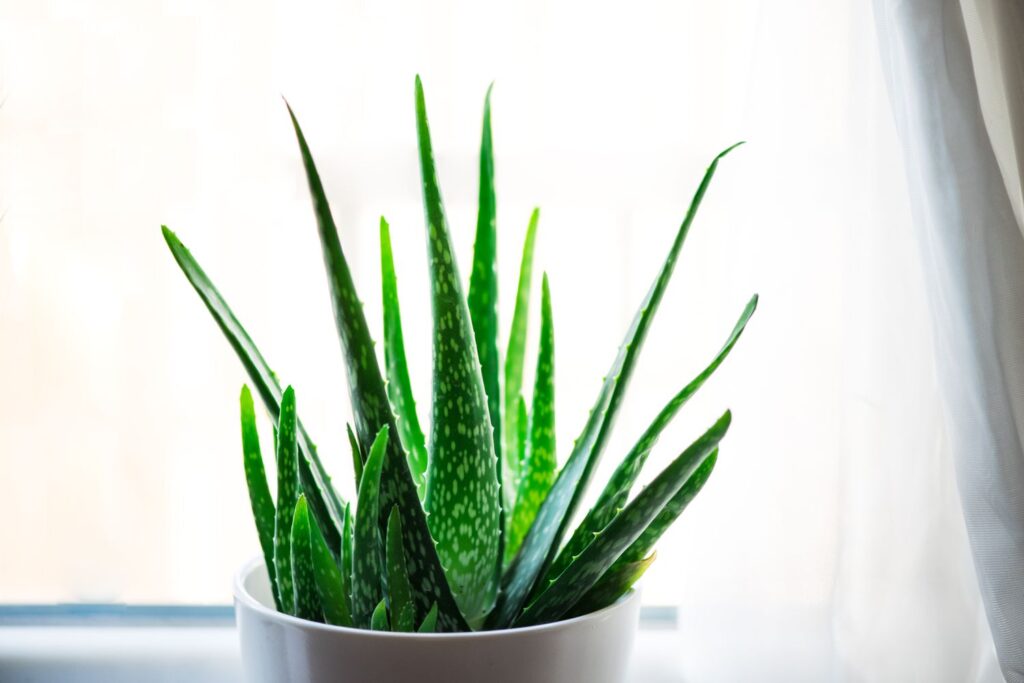
As with snake plants, the aloe vera plant is a succulent that has refined, sharp lines and a somewhat powerful appearance. Its delicate, elegant design can be incorporated into any kitchen. Its size can vary to become a charming windowsill decoration or a huge design feature in a bright corner. Aloe requires only a little water (a regular soak every couple of weeks is sufficient) and needs well-drained soil to look and function at its best. Place the plant in a bright window -either a southern or western sill is preferred since the more sunlight your aloe receives less likely it is will droop and fade its bright green color.
Although it’s a bit elegant and stylish, in contrast to its snake-like cousin, aloe vera contains properties that are medicinal, making it ideal for kitchens. The sap-like, thick juice contained in the leaves of aloe vera aids in healing and relieving pain from burns, which makes it both practical and fashionable. To put the leaves to use, just cut off a small piece of the leaf and squeeze some juice directly onto the area of burn. After that, allow the natural cooling properties of the plant to ease your skin’s irritation.
Thyme

Thyme is among the best herbs to grow in the kitchen thanks to its beginner-friendliness, beautiful aesthetic, and versatile culinary applications. Its woody, thin stems and small, round leaves appear elegantly rustic in a bright window and evoke the feeling of relaxing on the sofa by the fire to warm up and enjoy a warm winter dinner. Contrary to other herbs, thyme remains delicious when it is blooming, and you can take pleasure in the tiny, sweet flowers, and then use it at the table.
Thyme is a deeply delicious herb with a subtle, earthy, minty taste. It’s great as a flavoring for any kind of meat and is often a part of blends of poultry herbs. It’s also a delicious seasoning for mushrooms as well as in delicious citrusy Mediterranean dishes. It was also utilized in an elixir to prevent the Black Death; thankfully, Thyme’s use in the present is lighter.
The majority of varieties of thyme start to grow extremely slowly, so you should either propagate it using a cutting if you wish to observe it grow, or purchase an established plant instead of starting from seeds. Thyme thrives in soil that is well-drainedsimilar to the soil commonly used to grow succulents, and bright lighting. You can plant your thyme on a windowsill for in the event as it is guaranteed to get plenty of sunlight, and it will thrive under artificial lighting in an indoor kitchen garden, such as the AeroGarden.
Chinese evergreen

You might think you’d think that Chinese evergreen is a tough and high-maintenance plant due to its stunning pink hues as well as intricate, multi-colored patterns. However, its looks are misleading. It needs very little care and is a great home plant for any newbie. It is native to parts of the subtropics in Asia as well as New Guinea. Chinese evergreen prefers humid, warm air, making it well-suited to kitchens. It can also withstand low light levels — particularly those that have dark-green leaveswhich makes it an ideal plant for rooms that have a few windows or a limited amount of them.
It’s possible to find a Chinese evergreen suitable for every type of kitchen design. The varieties, such as those of the Red Siam, with green leaves that are highlighted in vibrant pink, give kitchens an airy, mysterious look. It’s Silver Bay — with subtle green shades is a perfect fit in an earth-toned Scandinavian kitchen. If you’re looking for a vibrant home plant that is a focal point, take a look at the Lady Valentine Chinese evergreen, with its delicate pale pink leaves sprinkled with deep, dark green.
Pothos
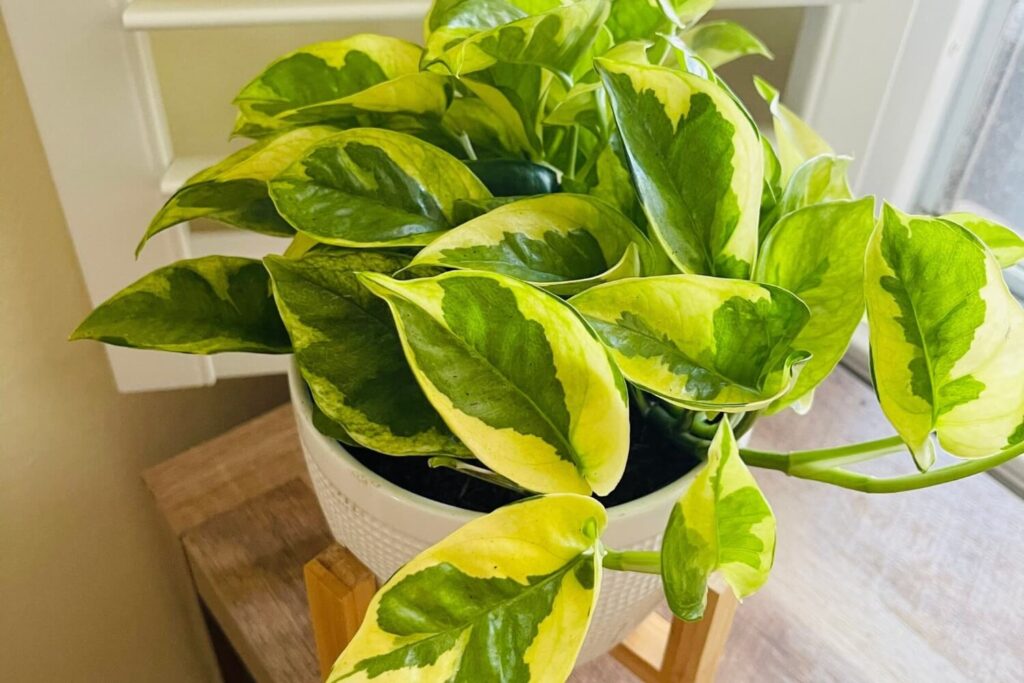
Hanging plants add modern elegance to any kitchen. Pothos is king in the realm of vine-like, trailing house plants. Pothos is simple and subtle and doesn’t need anything, but it provides lots. Its leaves are heart-shaped and have subtle color variations, but are usually dark green, with hints of lighter green variations. The unassuming plants can grow more than a foot in length in just a month, if the appropriate conditions are met. Set them on a shelf or the top of a cabinet, and let them dangle, giving color and a feeling of a peaceful, earthy ambience for your kitchen. You can also hang them from the ceiling in a corner, and observe them flourish even in lighting that is fluorescent.
A pothos must be watered when it’s noticed that the soil’s top 2 inches seem dry. In low-light conditions, it’ll require less water. However, don’t fret — pothos will let you know whether it’s thirsty. The leaves drop a little when it’s thirsty, which makes pothos an excellent plant for homes with people who are prone to forgetting about their plants. Pothos is also a fan of humid environments, which is why if you are inclined to cook frequently and cook often, it’s a good idea to put one close to the stove so that it benefits from the hot air.
Sage

From all the herbs that you can cultivate at home, the sage is the most suitable option. It is rustic and elegant thanks to its lush, soft leaves that other plants can’t match. It also has a refined but strangely ethereal visual appeal that could be related to its countless seasons of being used as a cooking or religious food item.
Like other herbaceous plants, the taste of sage increases the more leaves it has. It likes sunny windows to allow its leaves to reach their highest flavor potential. In addition, unlike many other herbs, sage can be extremely potent. A single plant on your kitchen window will provide you with a whole year’s worth of a fresh, herbaceous aroma. It’s more drought-resistant than many other herbs. Be sure to provide it with a bit of water when its leaves begin to drop to get the best flavor out of the plant.
Similar to thyme, sage is often used to flavor meats and vegetables that are savory. However, if you end up having a sage plant within your home, you’ll soon find yourself using it in a variety of different ways. Consider it for cocktails, where sage can add a hint of herbal flavor to margaritas, or sprinkle it on cakes and other baked goods to add a vibrant, earthy flavor to your home-cooked sweets.
Coffee plant
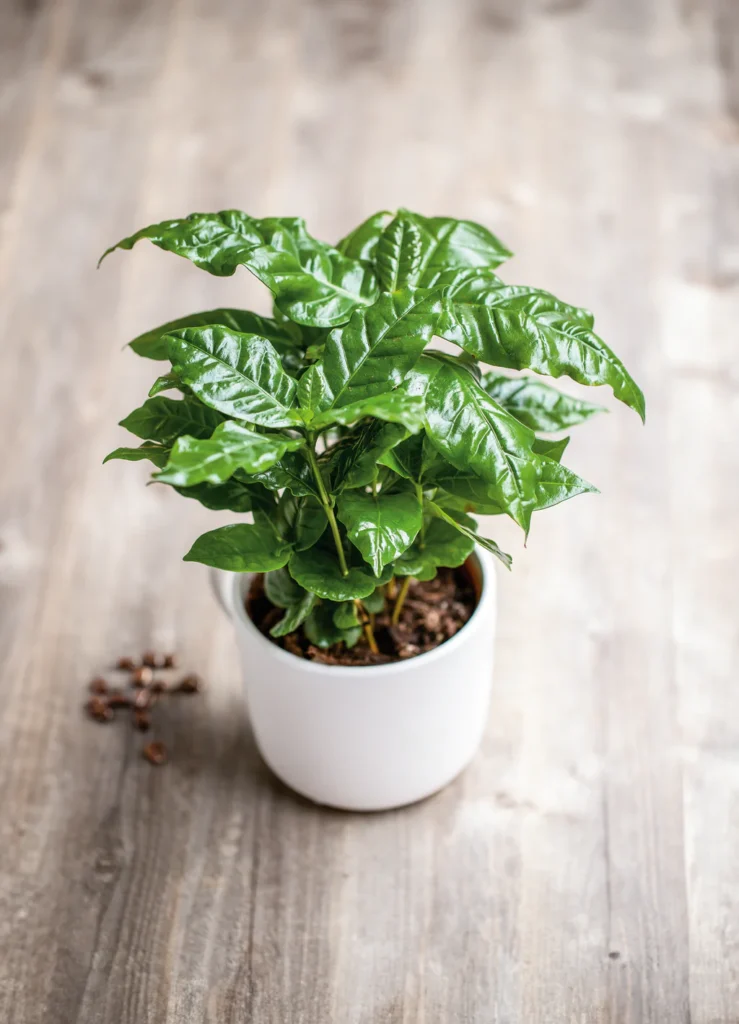
If you’re searching for an indoor plant that can attract your guests to inquire, “Oooh, what is that?” Look at the plant that makes coffee. It doesn’t matter if you’re an avid coffee drinker to benefit from the plant, as chances are you won’t end up with coffee cherries, the fruit that is a source of coffee beans, for a long time, regardless. If you ever end up in the presence of coffee cherries, they’re likely not enough for roasting an entire pot of coffee – but it’s worthwhile to try it in case you’re ready for the effort.
Coffee plants can grow into huge trees in their native environments; however, as a houseplant, they will grow to a small size, which is perfect for being placed on your north-facing window or as a centerpiece for the breakfast area. The leaves of this plant are known for their shine and are usually a solid dark green; however, some varieties of coffee have vibrant patterns with a bold variety of colors.
The coffee plant needs frequent watering. Typically, it’s an adequate soak every week or when the soil is dry. Avoid direct, bright light to prevent burning the leaves. Put it on a table or shelf at a distance from windows. Keep it away from pets since the leaves can be poisonous.
String of pearls
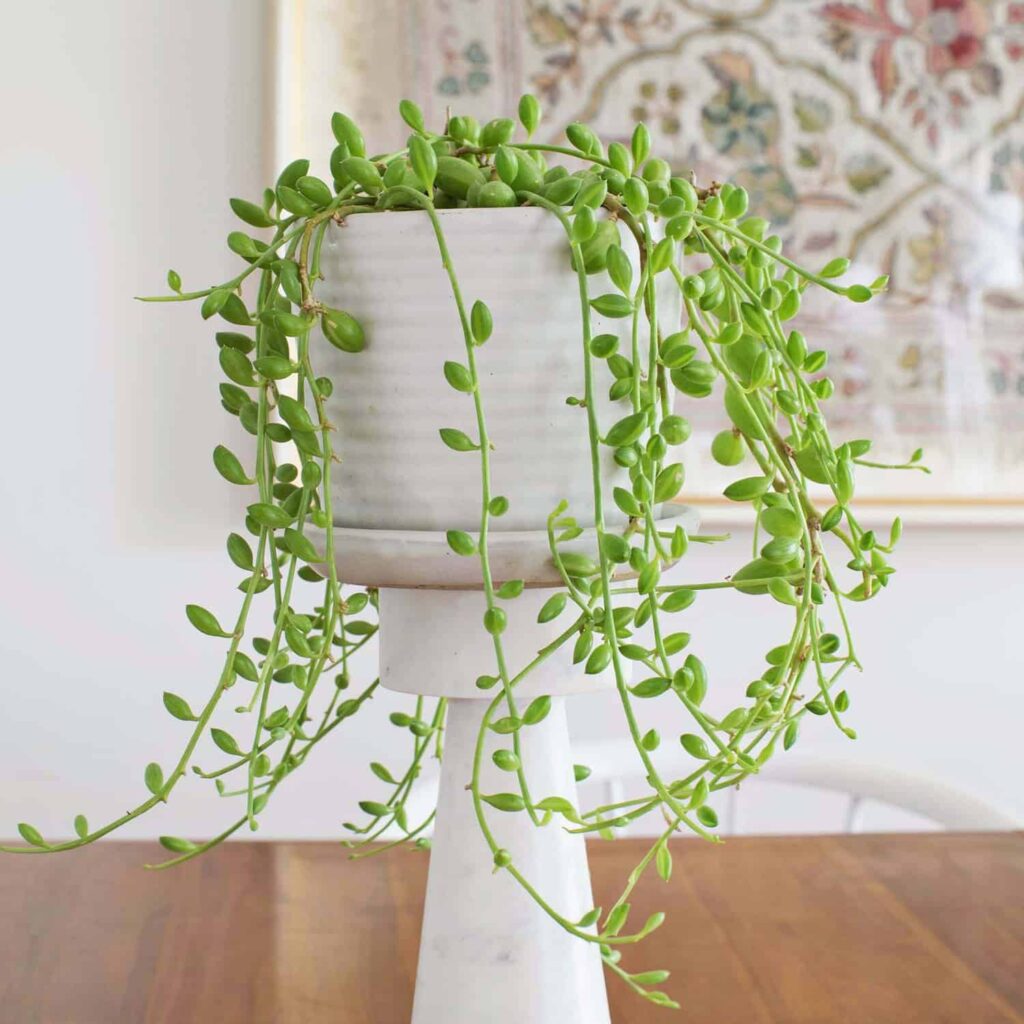
The last 10 years have seen an increase in the popularity of succulents as houseplants, in part because they are known to thrive under neglect. String of pearls is an extremely sought-after low maintenance plant that combines the appeal of succulents and hanging, trailing home plants. The leaves of strings of pearls are similar to peas; they are grouped tightly on dangling vines, which spill onto windowsills from pots as well as hanging baskets in corners.
String of Pearls, as with most succulents, loves bright sunlight. Try to find a bright, early morning sun and dimmer lighting late in the afternoon. Placing it on a windowsill facing east is the ideal spot. Place your pearls in soil that is well-drained and keep it watered sparingly, particularly in winter. They don’t develop very quickly; however, if you take care to treat your string of pearls properly, you’ll get an extended, slender trail of large, round leaves that bring some whimsy to your kitchen.
Chives
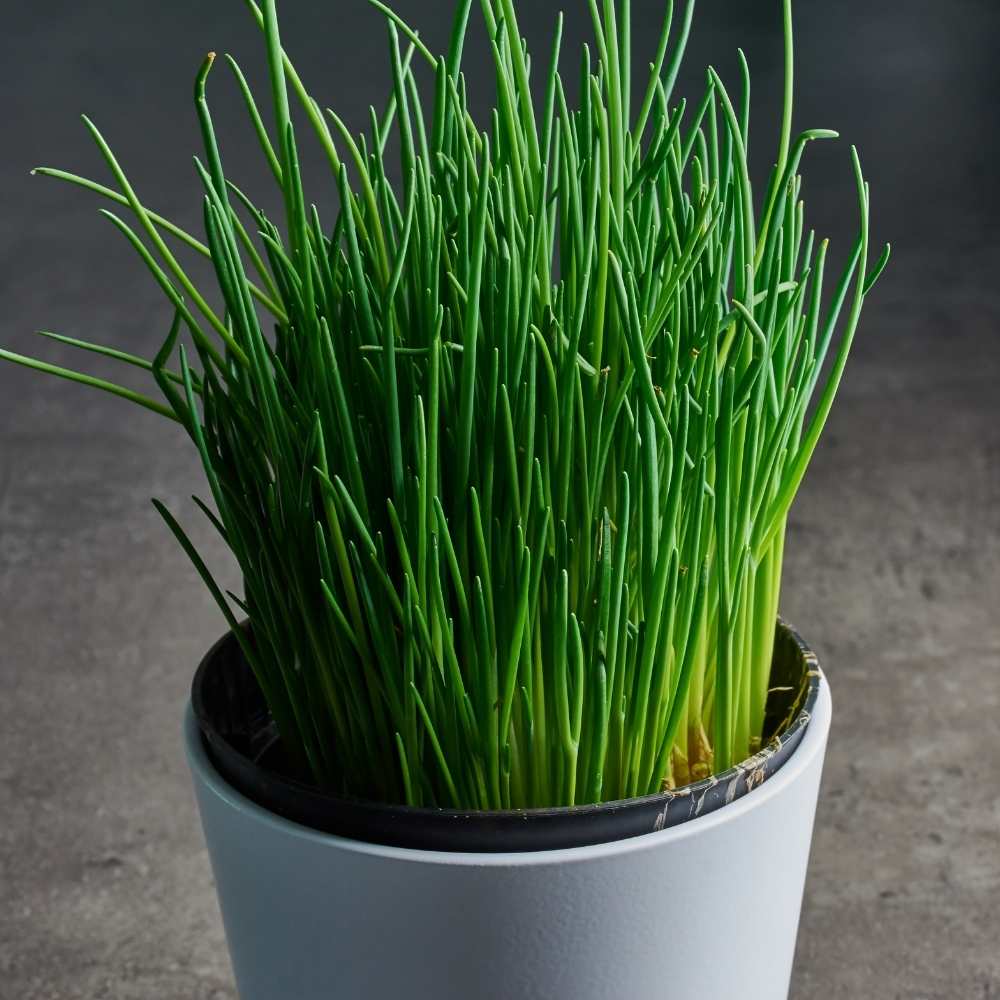
They might not appear as if they’re a lot, but when you see the chives growing on your kitchen window and you’ll be wondering why you didn’t get started earlier. Chives are not just adaptable from a culinary point of view; however, they also grow like weeds and are among the least maintenance-intensive herbs that are available. Chives are a perennial allium (although they are usually placed with other herbs) and are found throughout Europe, Asia, and North America.
While it’s more likely to see chives in the gardens or outdoors, they’re under-appreciated as a plant for containers. Pick a large container in which the plant’s root system can be comfortable, and then place the plant in a window or in a dark area. Chives thrive in full sunlight; however, in the event that your kitchen isn’t sunny, these tolerant plants can still come through. Plant them in a well-drained soil and ensure they are constantly moist to ensure the most flavor and yield.
Chives taste great in almost any savoury recipe. So, when you’re ready to use them, cut a few pieces of grassy blades, chop, and sprinkle on. Make sure not to cook chives because they lose their flavor and turn soft. Instead, sprinkle them over meat, eggs, or soups for garnish when the food is finished cooking.
Peace lily
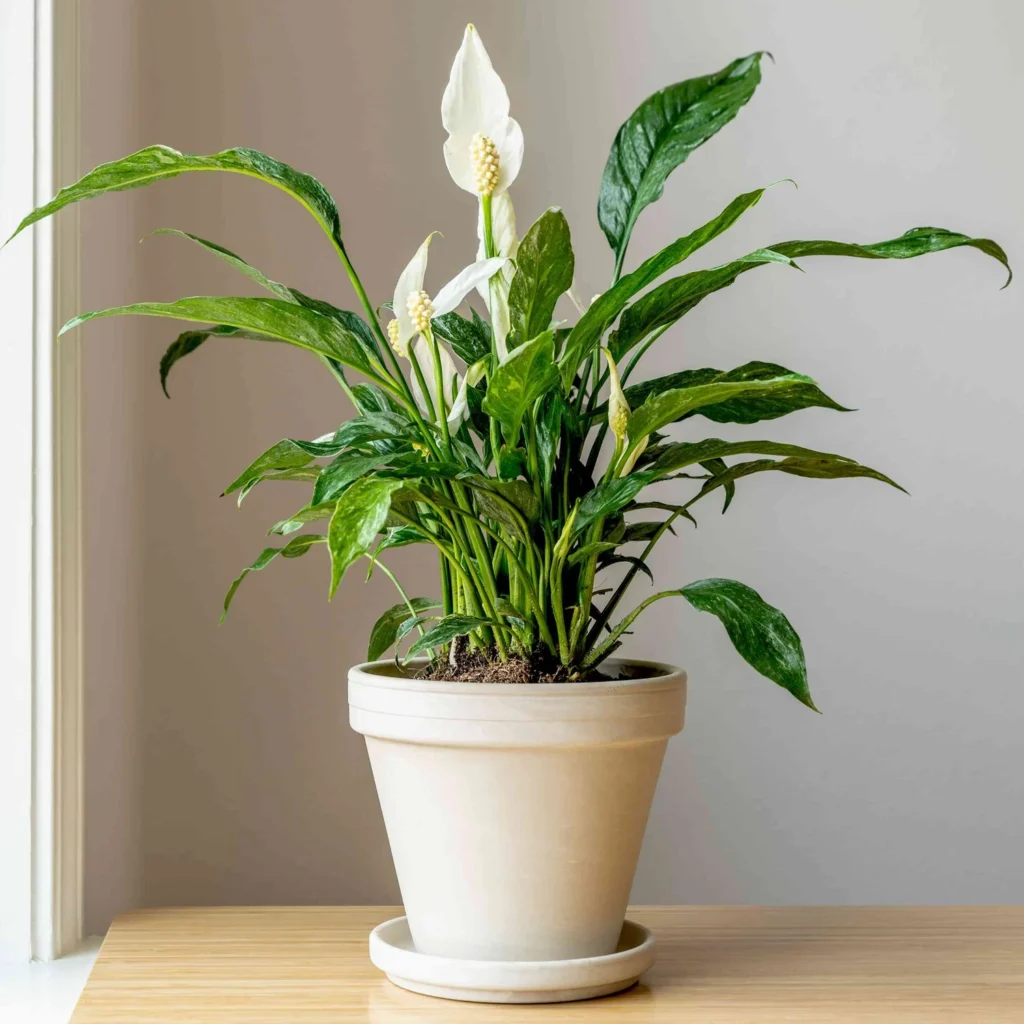
If you’re looking to transform the kitchen area into a tranquil paradise, then peace lilies are the ideal houseplant. As their name suggests, peace lilies are the best at bringing a space an enveloping sense of peace. The dark-green leaves of their species are glossy and bright, complemented by the oval and creamy white flowers, which bloom every other year. Although the peace lily is not fully blooming, however, it is a striking addition to the kitchen thanks to its unique leaves and powerful, tall presence.
It’s clear why peace lilies can be found everywhere because their beauty is a testament to their low maintenance requirements. They do well in dim light, which is why they’re perfect for dark kitchens. They’re also considered to be one of the top plants to clean the air in a space, which makes them a great option for kitchens.
Peace lilies like watering when the soil’s top layer is dry. However, it’s better to sub-water instead of overwatering (just allow the leaves to fall). Set them up in indirect sunlight on the floor far from drafts, to benefit from the warm, humid atmosphere. Even though peace lilies don’t really count as plants, they’re still harmful to cats. Therefore, be sure to keep the plant away from your pets.
Basil
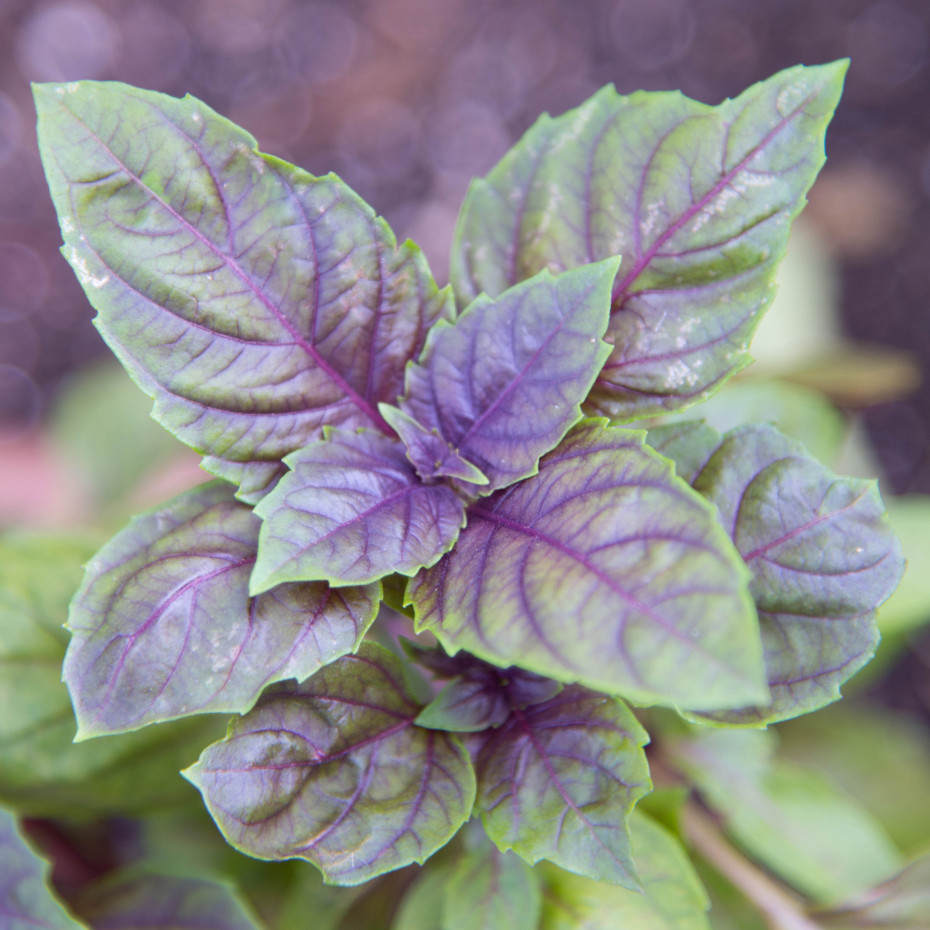
Basil is among the most widely used herbs in many dishes, and, fortunately, it’s also one of the top herbs you can grow in the kitchen. It’s likely to flourish even under less-than-ideal conditions, which is why it’s a good beginner herb. Additionally, a healthy basil plant is stylish on the kitchen window and can add a stylish appearance to your indoor herb garden. One garden in your home will give you about a half cup’s worth of basil each week, which is a huge amount for those who prefer to overdo it with their herb garden.
Basil’s flavor is fresh and peppery. It makes it ideal for homemade sauces, making caprese salads for topping pizzas, or incorporating with fruit salads to make a delicious, herbaceous sweet snack. For growing herbs in the kitchen area, you must first decide which kind of basil you’ll get the most value from and that can grow best in your kitchen. Select an area with a sun-filled (preferably either east or south-facing) space to grow your basil since the sun’s rays will ensure the best yield from your leaves. Maintain the soil that is well-drained, damp, and keep it at a safe distance from cold drafts.
Spider plant
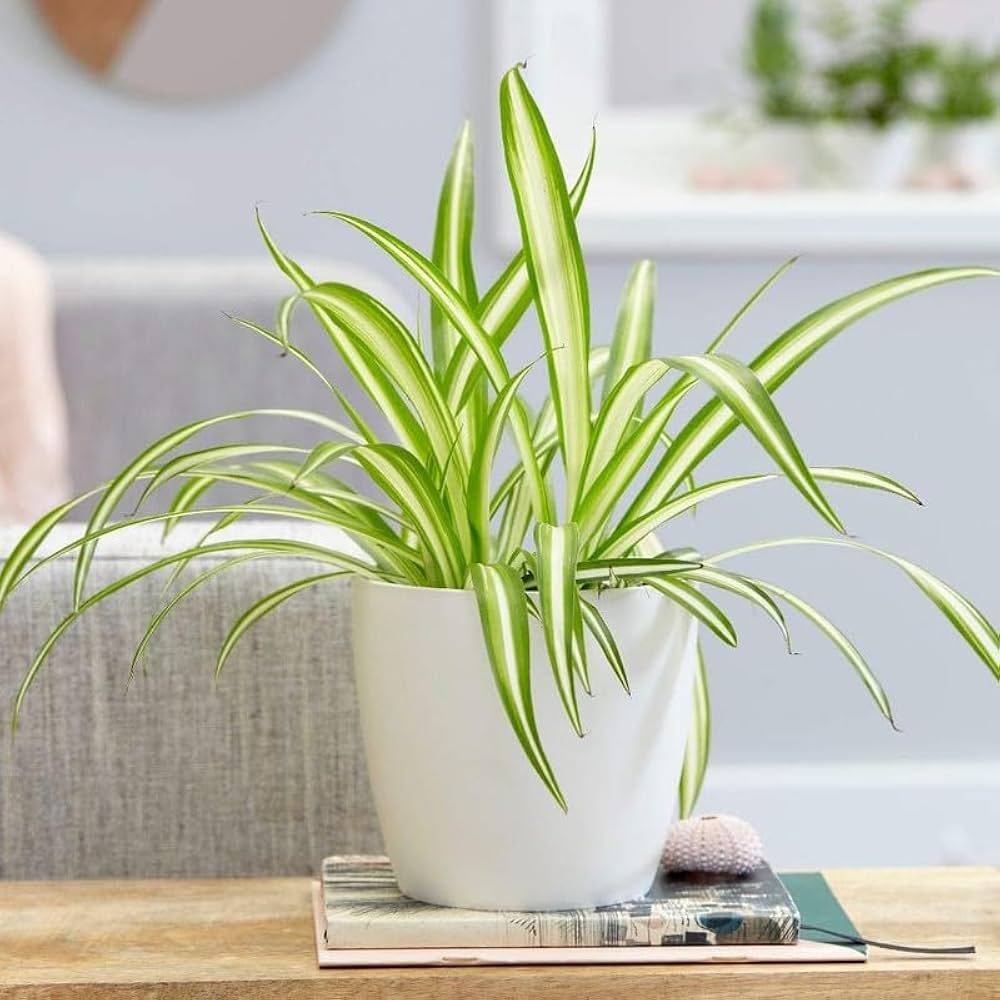
If you’re looking for the ultimate amusement within your kitchen that is biophilic, then the spider plant has your back. It is considered to be one of the simplest houseplants you can cultivate, making it among the top sought-after and easy to locate in garden centers. It’s also a breeze to propagate, therefore if you have an acquaintance with an invasive spider plant may get blessed with a Spiderette tiny baby which grows from the mother plant and will eventually develop into the legendary, fun home plant you’ve always wanted.
Spider plants are best suited to modern kitchens, thanks to their triangular, long leaves that spill over like natural ribbons. They appear particularly charming with the webs of their spiderettes visible, sticking out from the plant as an exploding green display. Spider plants can be found at their best in the kitchen due to their low light and temperature tolerance. They look stunning with a hanging basket placed set in front of an east or north-facing window where their baby leaves can hang in full view. They are known for their ability to purify the air, which means you can relax knowing that the plant will keep your kitchen clean.
Mint
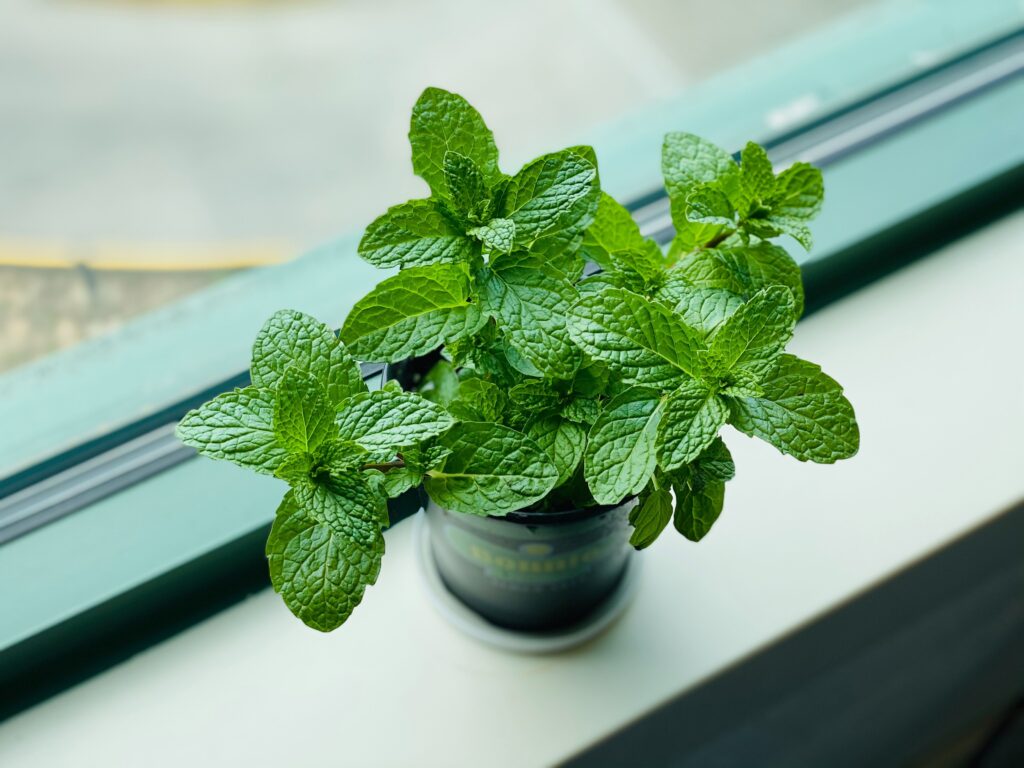
For those who are worried about their chances of not being able to keep their plants on their windowsills alive, mint is the one that comes in to show that anyone can have an herb garden. Mint is at home where it is (in the fact that it’s regarded as an invasive species) and can withstand indoor conditions far better than other plants. Mint’s sharp, textured leaves are a nice addition to an inviting indoor tea garden. It looks elegant in kitchen windows and countertops.
Before purchasing mint plants for your kitchen, you must first decide the kind of mint you’ll be using the most. There are a variety of varieties available, each with distinct characteristics; however, the most popular varieties are spearmint and peppermint. Many varieties of mint prefer indirect light, such as that emanating from an east- or west-facing window. As with all plants, mints like rich, nutrient-rich pots and lots of water. However, this tough plant will not punish anyone too harshly when you don’t think about it. You can give it a little liquid when its leaves begin to lose their shape, and then stop watering when the leaves begin to appear darker than usual.
Although it isn’t as adaptable as the other herbs in this list, mint is an excellent garden plant for those who are looking to make tea at home or create a variety of mojitos and lamb dishes. Mint is also able to make its way into a variety of desserts — particularly ones with lemon or chocolate and lemon. A small amount of the herb will enhance the flavor and add a refreshing sweetness.




